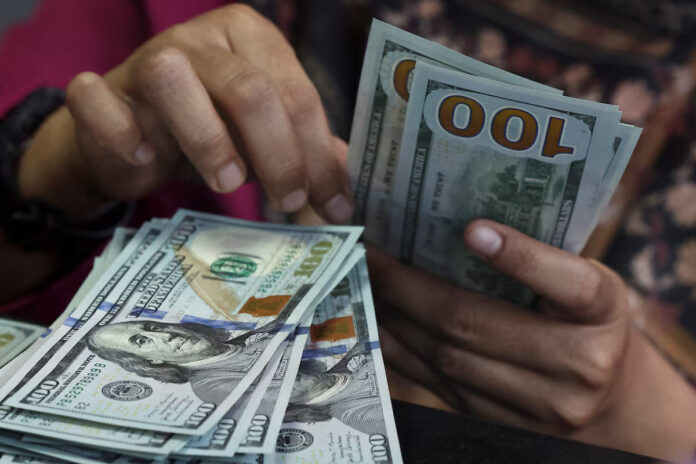
The U.S. dollar slipped on Thursday as renewed trade tensions between Washington and Beijing dampened investor sentiment and growing expectations of Federal Reserve interest rate cuts weighed on the greenback.
The dollar index, which tracks the greenback against six major peers, fell 0.16% to 98.512, putting it on course for a weekly decline of 0.33%. The euro edged up 0.14% to $1.1664, reaching a one-week high, while the Japanese yen strengthened to 150.52 per dollar, also its highest in a week.
Markets remained focused on the deepening rift between the world’s two largest economies after U.S. officials criticized China’s expanded rare earth export controls, calling them a threat to global supply chains.
Beijing defended the measures, arguing they were justified given Washington’s own restrictions on Chinese goods and technology firms.
Despite the escalating rhetoric, U.S. Treasury Secretary Scott Bessent said President Donald Trump still plans to meet Chinese President Xi Jinping later this month in South Korea. Analysts say the timing of the latest measures, set to take effect in November, could allow for compromise if talks go ahead.
“If the meeting goes ahead, some of last week’s measures could be toned down or even unwound and presented as successful deliverables,” said Vasu Menon, managing director of investment strategy at OCBC.
Under the current six-month trade truce, both sides have maintained reduced tariffs and continued rare earth exports, though extensions have so far been temporary.
“A longer extension, rather than a grand bargain, is probably the most realistic second-best outcome,” said Joseph Capurso, head of foreign exchange at Commonwealth Bank of Australia.
The Australian dollar fell 0.4% to $0.6485 after data showed unemployment hit a near four-year high in September, bolstering expectations of further interest rate cuts. The Swiss franc, another traditional haven, strengthened to 0.7952 per dollar.
Investors also weighed the likelihood of Federal Reserve policy easing, as traders priced in 48 basis points of rate cuts before year-end amid signs of slowing economic momentum.
The Fed’s latest Beige Book report noted that U.S. economic activity was “little changed,” with labour markets showing mild weakness and consumer spending easing slightly.
Meanwhile, in Japan, political uncertainty added to market caution after parliament failed to schedule a vote for a new prime minister.
Sanae Takaichi, leader of the ruling Liberal Democratic Party, faces challenges after coalition partner Komeito withdrew support, complicating her bid to become Japan’s first female leader.
“The cost of becoming prime minister is likely to be looser budget settings,” said Capurso. “There is unlikely to be much, if any, political support for policy tightening by the Bank of Japan.”
With the U.S. government shutdown entering its third week and global trade frictions persisting, currency markets remained volatile as investors balanced the search for safety with expectations of monetary easing.
Source: Reuters
Written By Rodney Mbua


















